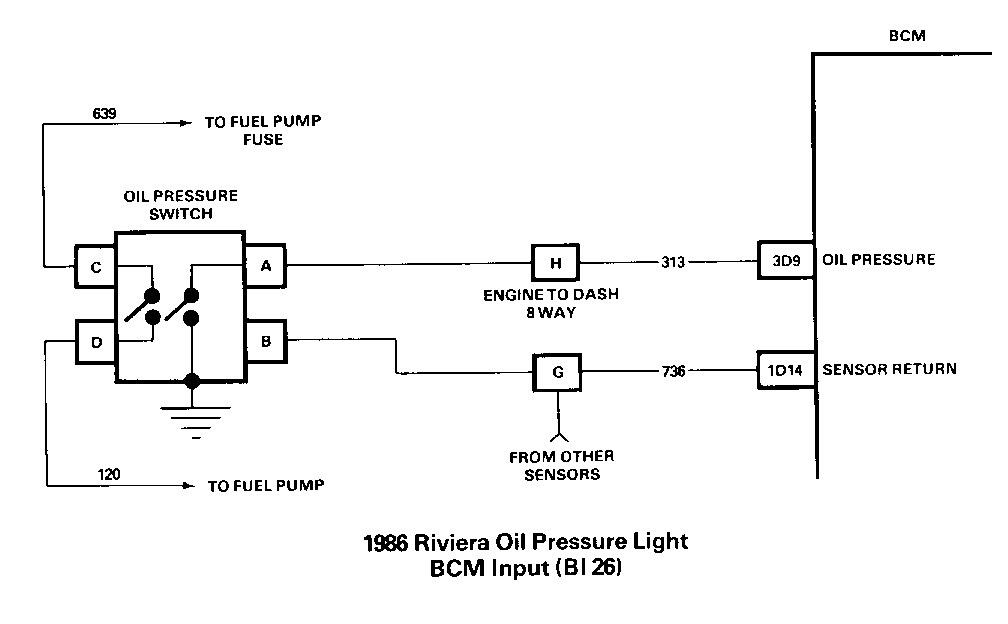INCORRECT OIL PRESSURE LIGHT OPERATION (NEW P/N)

VEHICLES AFFECTED: -1986 BUICK RIVIERA ONLY
Incorrect oil pressure light operation may occur on some 1986 E cars and may have several different causes. To understand the condition, it helps to understand the operation of the system. The light may either indicate a lack of engine oil pressure or a malfunction of the circult for the light. If the BCM sees an indication of oil pressure without the engine running, the light will also be illuminated to indicate a circuit problem. A secondary problem will occur if the individual repairing the vehicle tries to apply Product campaign 7R10 to a 1986 vehicle. Software differences between model years will not allow the vehicle electronics to function properly if this is attempted.
The 1986 model uses a 3 terminal oil pressure switch (part number #25037205), not a 4 terminal sensor. A sensor should only be used with a gauge equipped vehicle. Inspect the vehicle to determine that the correct component is present on the engine.
Next, check the condition of the connector terminals and connector body that attach to this switch. The terminals should be clean and free from corrosion and provide a tight electrical connection to the switch. If not, a replacement connector can be obtained as part of a connector kit found in group 2.535 of the 'E' car parts book. It should also be noted that it is mandatory that the weather-pak seals on this connector be in good condition and in place on the connector body.
If these steps have been taken and the condition still appears, check the operation of the oil pressure/fuel pump switch. (See attached circuit diagram which differs from the Service Manual). If voltage from the fuel pump circuit is allowed to bleed through to the unused 736 circuit or the 313 circuit back to the BCM, it may appear to the BCM that there is oil pressure when the engine is not running.
This indicates to the BCM that there is a problem in circuit operation and causes the oil pressure light in the IPC to illuminate. In addition, if this type of problem is present, there may be a combination of other sensor problems and/or codes. Circuit 736 is a sensor return circuit for the outside air temp sensor, in-car temp sensor, photocell, A/C high side and low side temp sensors sunload sensor, and the panel lamp dimming pot circuit. In this return circuit is effected by the stray voltage in this manner, the readings of these sensors that the BCM sees will not be accurate and may develop additional problems.

General Motors bulletins are intended for use by professional technicians, not a "do-it-yourselfer". They are written to inform those technicians of conditions that may occur on some vehicles, or to provide information that could assist in the proper service of a vehicle. Properly trained technicians have the equipment, tools, safety instructions and know-how to do a job properly and safely. If a condition is described, do not assume that the bulletin applies to your vehicle, or that your vehicle will have that condition. See a General Motors dealer servicing your brand of General Motors vehicle for information on whether your vehicle may benefit from the information.
